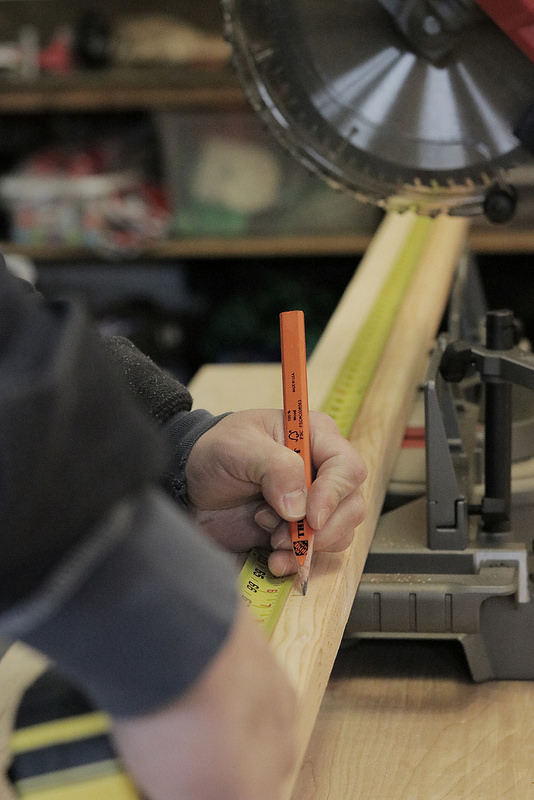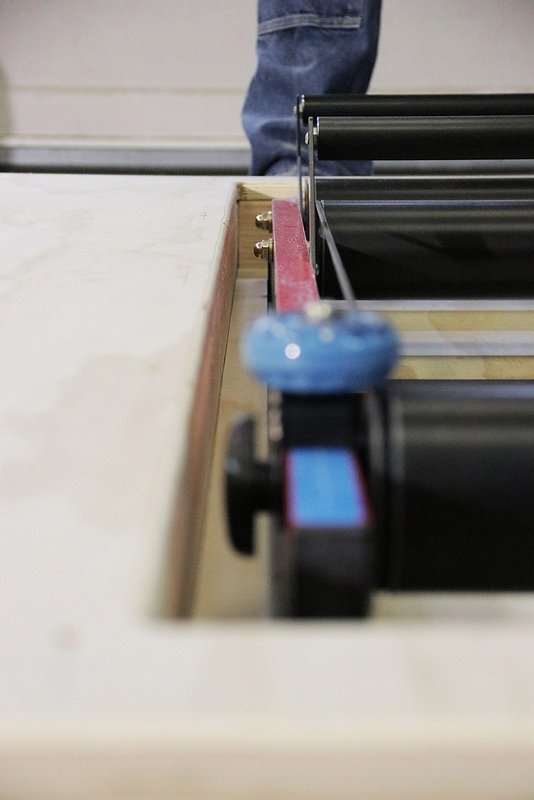What is the E-FLEX?
The E-FLEX is a motion platform for indoor bike riding. It was designed to fit any bike using the Kickr or Core smart trainers for resistance. By facilitating natural motion, we bring a more functional and realistic experience to cyclists who previously trained indoors on stationary, static bikes.
How long did this take to go from being an idea to being ready for market?
Well this didn't pop out fully formed. It percolated for more than a year before we built the earliest version for the rollers. That was the FFS. The two-piece design for the E-Flex didn't arrive for another two years, but both of those products use the bike's steering to control tilting motion. We call it "articulation" and we are the only motion platform to provide any sort of precise tilt control. Every other device on the market uses springs to essentially bounce side to side.
What made you think the E-FLEX should exist? What was lacking in the original Wahoo KICKR design?
The short answer is the standard Kickr doesn't move, which is truly a wasted opportunity. To train effectively motion is essential, and yet the most popular trainer on the market is fully rigid?! Combining the Kickr with controlled motion was just irresistible. Keep in mind the FFS was intended to limit motion on the rollers, while the E-Flex was designed to add motion to the Kickr. The articulated fork mount was the missing ingredient that improved both of them. The idea of those two very different products (rollers and trainers) meeting in the middle just perfectly illustrates where we think indoor training is headed.
We obviously were not the first to put a rigid trainer on a rocking platform. The generic rocker plate has been around for a few years, but they were (and mostly still are) fairly crude devices popular with the DIY crowd, and not very pleasant to ride. The only other serious effort to produce a commercial motion platform was the Saris MP1, a massive device touted as a "game changer" but really nothing more than a typical rocker plate with a high price and a heavy dose of marketing. The technology behind it was already obsolete when it was introduced. My feeling is if you want to make great products, you should try to advance the design in ways that matter. I think we've done that, first with the rollers and again with the Flex.
What were some of the initial mistakes or design errors or "learning experiences"?
For sure I'm guilty of not fully understanding generic rocker plates before diving in. To me they seemed unstable and hard to ride. What I didn't appreciate was how fanatical people are about the basic rocker configuration. They say they have a perfectly good design and continue to insist there's no problems that need fixing. In that respect, the seasoned rocker rider does not see E-Flex as a solution. Most of our sales are to people who have sampled a conventional rocker and didn't care for it. The E-Flex is more appealing for them because it's much easier to control and is good at both sit-down riding and out of the saddle efforts.
Conventional rocker riders have a complex little dance they do to control the rocking motion, which involves moving the hips side to side to get the desired bouncing/rocking action. In my opinion that detracts from the ride experience, and it's not great for your riding technique either. The E-flex eliminates the hip motion and keeps your body aligned right over the bike's virtual center, while your arms control the rocking motion. I think that's an important difference between us and typical rocker plates.
Are there "secret" benefits to pairing the Wahoo Smart Trainers with an E-FLEX? In other words, are there advantages that might not meet the eye at first glance? (Does the E-FLEX reduce strain on the bike frame, for example? Does it help train efficient pedaling for example? Does it help develop essential stabilizing muscles in a functional way, for example? Is there a smaller footprint than the original design?)
There are a number of benefits that apply to all motion platforms, but the Flex just elevates the experience by allowing you to control the rocking action rather than relying on springs or inflatable balls to keep the bike upright. The E-FLEX is a springless design, so it responds instantly to handlebar pressure where conventional rocker systems tend to get out of sync easily. With the Flex, you can rock the bike under any conditions and never miss a beat. And another thing that's not readily apparent is how it feels to have direct influence of the bike's behavior through handlebar pressure. It creates a very real steer/balance feedback that brings the ride to life. Rigid trainers and conventional rocker plates do nothing when the handlebars are moved. They feel disconnected and pointless. If you watch how people ride in the real world, steering plays a role in the rocking motion. Whether seated or standing, the bike steers side to side in a weaving motion as it is pedaled along, and having that same feeling on the trainer is awesome.
What does the learning curve look like for a new E-FLEX rider? What can a new rider do to get the most out of their E-FLEX inside ride experience, from the start?
There are two answers to this question. We do plenty of supervised demo rides where the learning curve is almost instant, like 60 to 90 seconds. It's really easy when you have hands-on coaching, but that is obviously only possible for local customers. For most folks it's going to take more time to get the motion right because there isn't any observational feedback. They basically have to read the instructions and think it through before taking that first ride. People don't always take the time to read instructions though, so we offer individual help for anyone willing to send us a short clip of them riding the E-FLEX. It can make all the difference. The bottom line is if you don't feel good 10 minutes into your first ride, you need to stop and re-read the instructions.
What is your favorite Inside Ride workout? What does your typical Inside Ride session look like?
I personally like to keep it simple and ride stair steps. Using the manual resistance mode on our app, I just bump the resistance of the rollers up to a 6 percent grade and climb the slope seated for 3-5 minutes. When the burn starts, I go to 10 percent and continue out of the saddle for another 2 minutes. Recover for 5-8 minutes and repeat. I do this for about an hour. And yes, I do this with the floating forkstand because it feels great and I can push harder.
Do you have new inventions in the works? Any new ideas spinning in your mind? Or, are you taking a break from creating? (You can keep this as short as "yes" or "no", or elaborate extensively!)
Well even though the E-FLEX system is still "new technology", we recently got a patent for the 2nd generation E-Flex. It has an additional steering linkage which should appeal to a wider range of riders because it takes less handlebar motion to create tilt. We also have a design for a full indoor bike that incorporates the E-FLEX system, so no need to attach your bike. This is not going to be anytime soon, but some of the bigger trainer brands are already going this way and doing pretty well. We'll be ready when the time is right.






























